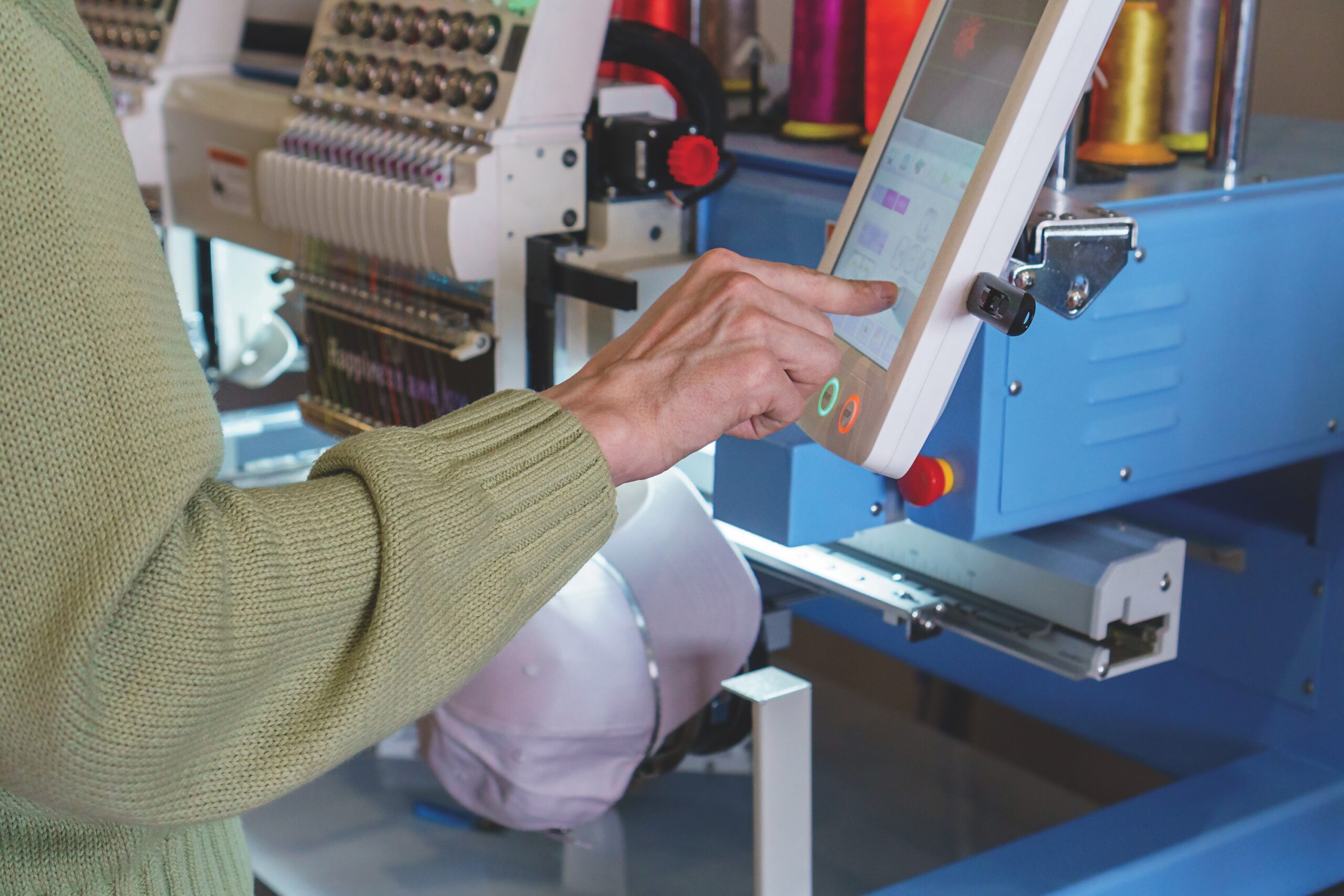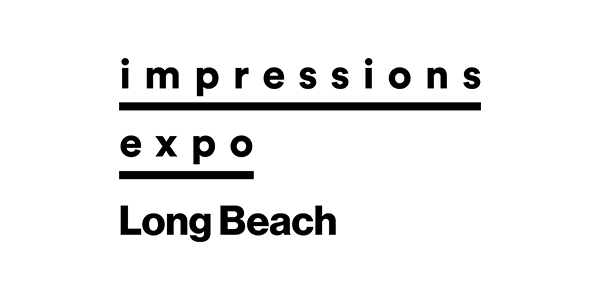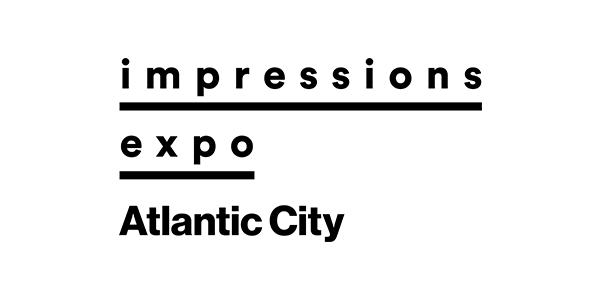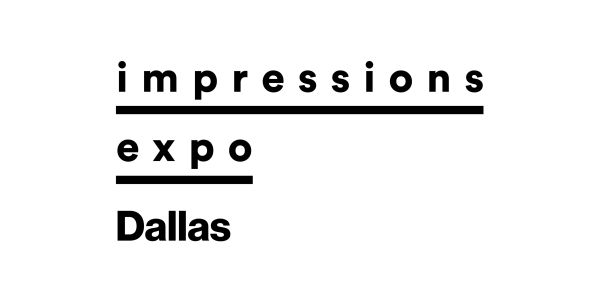Market conditions, profit margins and the potential to expand your existing customer base are all in play if you expand into this area
The following story was adapted from an online article originally published by the decorated-apparel e-commerce platform InkSoft (inksoft.com), part of the Inktavo family of software solutions for print shops, promotional product and branded merchandise businesses (inktavo.com).
Embroidery is a decoration method most businesses in the custom-branded merchandise and decorated apparel industry offer, either in-house or outsourced. Often, though, it’s a service that isn’t promoted as heavily as disciplines like screen printing, heat transfers or direct-to-film (DTF).
Even if your shop isn’t highly specialized in embroidery and you subcontract it out to another decorator, promoting this decoration method is a great way to boost your bottom line and help your shop stand out from the competition, since it offers certain detail and quality not possible with printed garments. Here’s a look at why it’s worth considering embroidery.
1. A Change in Demand for Embroidered Products
Even though embroidery is often considered a niche decoration method, consider this: one recent report found that the global embroidery market was valued at more than $3 billion and is expected to surpass $5 billion by 2027. A few of the factors contributing to this popularity include:
- Increased Customization: The growth of e-commerce and direct-to-consumer businesses has both impacted decorators since having increased the demand for personalized products. Take a minute and think about how many ads you see a week for a website that will add a logo to a hat, shirt or tote for you with various fonts, colors and substrates. Embroidery offers high-quality, durable personalization, and while it might not offer Amazon-level turnarounds, it’s the kind of customization customers are typically willing to wait for.
- Brand Perception: If you print merch or custom decorated apparel for corporate clients, you’ve probably noticed many of your customers have moved away from cheaper swag for their employees. The days of the cheap T-shirt that ends up on a thrift store rack are fading away. Embroidered logos and designs convey a sense of professionalism and longevity, making them appealing to corporate clients as they consider the promotional items they’re like to offer.
- Fashion Trends: Every few years, an old style previously considered out-of-date comes back and is labeled “vintage” or “retro.” You could argue that some older styles incorporating embroidery have resurfaced in popularity.
2.Expanding Your Customer Base with Embroidery
Typically, you’ve probably seen embroidery on popular products like jackets for sports teams’ swag for schools and corporate clients. However, opportunities exist across other customer niches as well. These include:
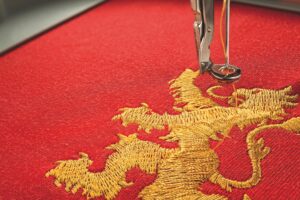
Embroidery provides the kind of high-quality, durable personalization higher-end customers are willing to pay for. Photo by c_atta – stock.adobe.com
- Tourism and Hospitality Businesses: Any popular destination represents a great candidate for embroidery, especially if it’s in your immediate area, allowing you to establish a rapport with the owner. Whether it’s a hotel, resort, aquarium, botanical garden, theme park or any other popular spot that people from out of town frequent, these businesses thrive on selling branded merchandise in their gift shops and online. Embroidered polos, caps and tote bags are all great products to offer these customers. Because of their perceived value, you can also charge a premium for the decoration method.
- Small Businesses and Startups: While smaller businesses and startups won’t have as big a merchandise budget as tourist attractions, they’re still in the business of brand building. Anything you can offer them that establishes a professional image, like embroidered apparel, headwear and embellished promotional items for their customers, can be a strong contender.
- Franchises: These businesses can be slightly more complicated to tap into since they often have a particular set of brand guidelines and colors. That said, if your business is skilled at working with chains and larger enterprises, working with a franchise can be a profitable niche for embroidered apparel, the same as other corporate clients. On the plus side, franchises usually have larger budgets and a more extensive workforce, which means larger orders.
3.Complementing Other Custom Apparel Decorating Methods
For those exist shops looking to grow their business, embroidery can be a great way to complement and build on other popular decoration methods, like DTF and direct-to-garment (DTG) printing:
- Mixed Media Designs: Combining embroidery with DTG or DTF creates visually striking and textured designs.
- Premium Tier Offerings: Embroidery can be marketed as a premium option for clients looking to elevate their purchases. A premium product offering is where the “good-better-best” strategy comes into play.
- Versatility: While DTG and DTF are great for detailed, colorful prints, embroidery excels with logos and text that require durability. In other words, if your customer needs the text and font to stand out on a garment or accessory for longer lengths of time, embroidery can be an excellent option.
That said, while adding another service to your customer decorating shop’s menu might sound enticing, there are three big questions to consider before diving headfirst into embroidery:
- Is it profitable for my shop?
- When do I contract out?
- When do I say, “no”?
What follows is a deeper dive into all three questions.
Ensuring Commercial Embroidery Jobs are Profitable
Profitability is critical for any decorating job, and embroidery can get complicated and expensive much faster than, say, DTF, DTG, heat transfers or a single-color screen print. To help out with this process, Inktavo has created something called the Embroidery Pricing Matrix, which you can access at the following URL: inktavo.com/tools-resources/embroidery-pricing-matrix. Before crunching the numbers, though, consider the following factors as well:
- Design Complexity: Complex designs require more time and resources, which impact labor costs and final job prices. Make sure you spell this out for your customers before building a mockup.
- Material Costs: While the cost of raw materials for embroidery, like thread, isn’t necessarily expensive, some garments you’ll be decorating will be pricier than they would be for other methods, like screen printing. Stitching usually requires heavier-duty fabrics. Therefore, if you’re decorating apparel, that will mean more expensive items like polos, jackets and sweatshirts.
- Labor Time: Digitization, setup and actual stitch-out times all need to be factored into the cost of an embroidered design. Subcontracting out, especially digitizing, can speed up some of the process—but only at a cost.
- Routine Maintenance: Like all your other equipment, routine maintenance of your embroidery machines (if you’re stitching in-house) is key to profitability. Make sure you factor in downtime for maintenance on your monthly schedule, so you don’t end up having to deal with machine breakdowns mid-job.
When to Contract Out Your Custom Embroidery Jobs
If you’re not prepared to make the equipment investment, here are a few reasons why contracting out your embroidery work can be beneficial for you and your team:
- Keeping Up with Demand: If your in-house capacity is constantly maxed out, contracting out embroidery helps you stay on top of orders without sacrificing quality or missing deadlines.
- Specialized Orders: For high-volume orders or super detailed jobs, contracting out can save your team labor hours and headaches while still netting a profit.
- Training Capacity: Training to run an embroidery machine takes time, and if it’s not possible at present to factor in that downtime at your shop, outsourcing can save you time on cross training. It will also give you more space to assess whether it’s worth bringing embroidery in-house.
When to Say “No” to a Custom Embroidery Client
You’ve probably had other instances where it’s more feasible to refer your customer to someone else, as opposed to taking on a job yourself, and that happens with embroidery as well, the same as with other decoration. What follows are a few key reasons you might want to pass:
- Short Deadlines: Embroidery is time-consuming and intricate. If the customer “needs it yesterday,” it’s probably not worth the effort. Rushing a job sets you up for errors and could end up costing you more than the job brings in.
- Unprofitable Orders: If a quick calculation with the aforementioned pricing matrix shows the job doesn’t meet your minimum profitability thresholds, it’s worth reconsidering. One option is developing an added fee that works for you and your customer. However, this can be a slippery slope, since making an exception can create unrealistic expectations for future jobs with that customer.
- Design Complexity: If the design is too complex for embroidery, suggesting another decoration method is often a good idea. You won’t be able to charge the same premium fee as with an embroidered logo. But if it’s simpler to print it with, say, DTF and you’ll still be able to keep the customer, that’s a good trade-off.
Again, adding embroidery to whatever other decoration methods you may already be using will help you build a reputation as a shop that offers diverse, high-quality options. Pairing this reputation with tools like online stores and production management software will in turn set you and your team up for that much greater success.
Mike Clark is the content marketing manager for Inktavo, a family of companies that provides software solutions to help print shops, promotional product distributors and branded merchandise businesses succeed. For over eight years, Clark also served as an associate and managing editor at multiple decorated apparel industry publications.

